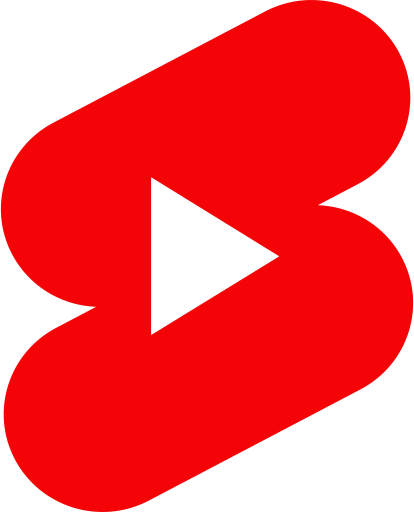How to Diagnose and Fix Performance Drops with Social Media Monitoring
- •Why Social Media Performance Drops Happen
- •Hypothesis 1 – Algorithm Changes
- •Hypothesis 2 – Content Fatigue
- •Hypothesis 3 – Audience Behaviour Changes
- •Hypothesis 4 – Increased Competition
- •Hypothesis 5 – Technical Issues
- •Hypothesis 6 – External Factors
- •How Social Media Monitoring Tools Help Diagnose Performance Drops
- •Tracking Engagement Metrics
- •Analyzing Audience Insights
- •Identifying Algorithm Changes
- •Sentiment Analysis
- •Competitor Benchmarking
- •Click-Through and Conversion Rate Tracking
- •Key Social Media Monitoring Tools for Diagnosing Performance Drops
- •Best Practices for Recovering from Performance Drops
- •Conclusion
We all know platforms like Facebook, Instagram, Twitter, and LinkedIn serve as key channels for audience engagement, customer service, brand building, and sales generation. However, we’ve all been through times when the performance of our social media efforts takes an unexpected dive. Engagement rates drop, reach diminishes, or conversions fall short of expectations, and it can feel like there’s no clear reason behind it.
This is where social media monitoring tools come in. These tools help businesses and marketers track, measure, and analyze their social media presence in real-time. When there’s a noticeable dip in performance, these tools can offer insights that help diagnose the root cause of the issue. This blog post will explore how to use social media monitoring tools to identify and address performance drops, ensuring that you can act quickly to recover and optimize your strategy.
Why Social Media Performance Drops Happen
Before we dive into the specifics of using monitoring tools, it’s important to understand why performance drops occur in the first place. There are several reasons why your social media metrics might take a turn for the worse:
Hypothesis 1 – Algorithm Changes
Social media platforms constantly update their algorithms, which can affect the visibility of posts. A change in how content is distributed or prioritized could result in fewer impressions and engagement for your posts.
Hypothesis 2 – Content Fatigue
Audiences get tired of seeing the same type of content. If your social media posts become repetitive or don’t evolve with changing trends, engagement can suffer.
Hypothesis 3 – Audience Behaviour Changes
Social media users’ interests and behavior evolve over time. If you don’t adjust your strategy to align with these shifts, your performance may decrease.
Hypothesis 4 – Increased Competition
As more businesses invest in social media marketing, competition for attention grows. Without constant refinement, it’s easy to get lost in the noise.
Hypothesis 5 – Technical Issues
Sometimes the issue is not with your content or strategy, but with the technical aspects of posting, such as broken links, slow load times, or other platform-specific glitches.
Hypothesis 6 – External Factors
Changes in the broader market, social issues, or even seasonal fluctuations can affect audience behavior and engagement.
Now that we’ve covered some of the main reasons for performance drops, let’s look at how you can use social media monitoring tools to diagnose the issue and take corrective actions.
How Social Media Monitoring Tools Help Diagnose Performance Drops
Social media monitoring tools give you the data and insights needed to identify why your social media performance is underperforming. These tools monitor various metrics across platforms, allowing you to track everything from engagement rates to sentiment analysis. Here’s how they can be used to diagnose performance drops:
Tracking Engagement Metrics
Engagement metrics—such as likes, shares, comments, and overall interaction—are some of the most common indicators of social media performance. A sudden dip in engagement can be the first sign that something isn’t right.
Social media monitoring tools like Sprout Social, Hootsuite, and Buffer track these engagement rates over time. By comparing recent performance to past benchmarks, you can identify if there’s been a sudden drop-off and pinpoint which types of content or campaigns performed less effectively. From there, you can adjust your content strategy, tone, or posting schedule accordingly.
Analyzing Audience Insights
When performance drops occur, it’s important to consider whether your audience has shifted. Changes in demographics, interests, or behaviors can influence engagement. Social media monitoring tools can track audience growth, location, age, and even job titles, helping you understand if your audience is changing in a way that’s impacting performance.
For example, if you’ve gained more followers in a new geographic location or age group, their preferences may differ from your core audience. Monitoring tools will give you the data needed to refine your targeting and messaging to better match your evolving audience.
Identifying Algorithm Changes
As mentioned, one of the most common causes of a drop in social media performance is changes to platform algorithms. Social media monitoring tools often provide alerts or notifications when significant algorithm updates are detected. For example, tools like Brandwatch and Agorapulse offer features that help you stay informed about changes on platforms like Instagram, Facebook, and Twitter.
Knowing about these algorithm shifts allows you to adjust your content strategy to maintain visibility. This might include increasing the use of hashtags, creating more engaging multimedia content, or modifying post timing to align with new algorithmic preferences.
Sentiment Analysis
Sometimes performance drops are not about the numbers—they are about how people feel. A sudden surge of negative sentiment toward your brand can have a serious impact on social media performance. Sentiment analysis, a feature offered by many social media monitoring tools like Talkwalker and Brandwatch, tracks the tone of comments and mentions about your brand, products, or services.
If you’re noticing a spike in negative comments or reviews, monitoring tools can help you identify the root cause—whether it’s a customer service issue, an unfavorable review, or a PR crisis. With this information, you can address the underlying issue before it leads to a more significant drop in engagement or brand reputation.
Competitor Benchmarking
Another way to understand performance drops is by comparing your results to those of your competitors. Social media monitoring tools often allow you to track competitors’ activities and performance, so you can see if their engagement is rising while yours is falling.
Competitor analysis tools, like those offered by SEMrush and Rival IQ, can show you what content or strategies your competitors are using successfully. If their content is outperforming yours, it may be worth investigating their approach and making adjustments to your own strategy.
Click-Through and Conversion Rate Tracking
Social media doesn’t just exist to increase engagement, it’s also a channel for driving website traffic, conversions, and sales. If your primary goal is conversion, drops in click-through rates (CTR) or conversions can indicate that your audience isn’t responding to your calls to action.
Monitoring tools such as Google Analytics, combined with social media insights, can help you track how well your social media efforts are driving traffic and conversions. If these numbers are falling, it may be time to reassess your CTA strategies, landing page design, or offer.
Key Social Media Monitoring Tools for Diagnosing Performance Drops
There are several tools available that specialize in social media monitoring and can help you diagnose performance drops. Some of the most effective ones include:
- Shortimize: This platform is excellent for detailed reporting and analysis of social media metrics. Shortimize allows you to track engagement, monitor mentions, and receive alerts about changes in audience behavior.
- Hootsuite: Known for its all-in-one social media management capabilities, Hootsuite allows users to track engagement, measure audience growth, and schedule posts, while providing deep analytics for diagnosing performance issues.
- Brandwatch: Ideal for sentiment analysis, Brandwatch helps you measure how users are talking about your brand. It also offers competitive analysis features, allowing you to compare your performance to industry leaders.
- Buffer: Another popular tool for social media scheduling, Buffer provides easy-to-understand performance metrics and trends, enabling you to spot performance drops and identify what’s working or not.
- Agorapulse: This tool offers powerful social media monitoring features, helping you track mentions, hashtags, and overall engagement while also allowing you to analyze the effectiveness of different posts.
Best Practices for Recovering from Performance Drops
Once you’ve diagnosed the issue using social media monitoring tools, here are some best practices to consider when trying to recover from performance drops:
- Test New Content Formats: If engagement drops are due to content fatigue, experiment with new formats, such as video, polls, stories, or interactive content.
- Engage with Your Audience: Responding to comments and messages, hosting Q&A sessions, and running giveaways can help reignite engagement.
- Adjust Your Posting Schedule: Use analytics to determine the best times to post and adjust your schedule accordingly.
- Review Your Social Media Strategy: Regularly audit your content strategy and messaging to ensure that it aligns with your audience’s preferences.
- Monitor Competitors: Keep an eye on your competitors’ performance and adapt your strategy to stay competitive.
Conclusion
Performance drops on social media are inevitable at some point, but they don’t have to be a sign of failure. By leveraging social media monitoring tools, businesses can diagnose the causes of these drops and take immediate action to address the issue. Whether the problem lies with content, audience changes, algorithm shifts, or external factors, monitoring tools provide the data needed to understand the problem and adjust accordingly. By staying on top of your social media performance and continually refining your strategy, you can ensure that your brand stays relevant and continues to thrive in an ever-changing digital landscape.
 TikTok,
TikTok, Reels, and
Reels, and Shorts
Shorts